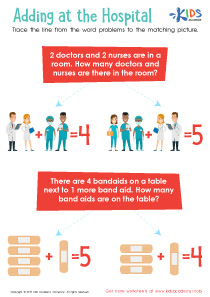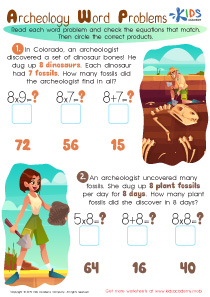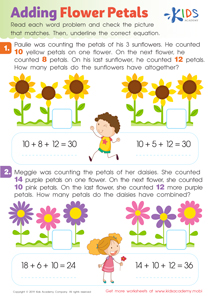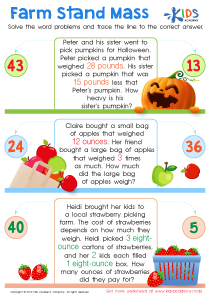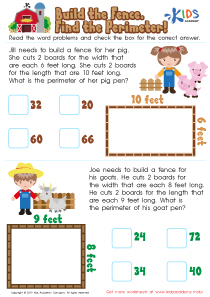Normal Money Word Problems Worksheets for 6-Year-Olds
1 filtered results
-
From - To
Introduce your young learner to the world of basic finances with our "Normal Money Word Problems" worksheets, tailored specifically for six-year-olds. These engaging and educational homeschool online printables are designed to help children understand the fundamentals of money through simple, real-life scenarios. Each worksheet combines clear visuals with age-appropriate money problems that teach children how to count, add, and think critically about using money in everyday situations. Perfect for homeschool settings, our printables ensure a fun and interactive learning experience that builds both math skills and financial awareness from a young age. Equip your child with the knowledge to manage money wisely!
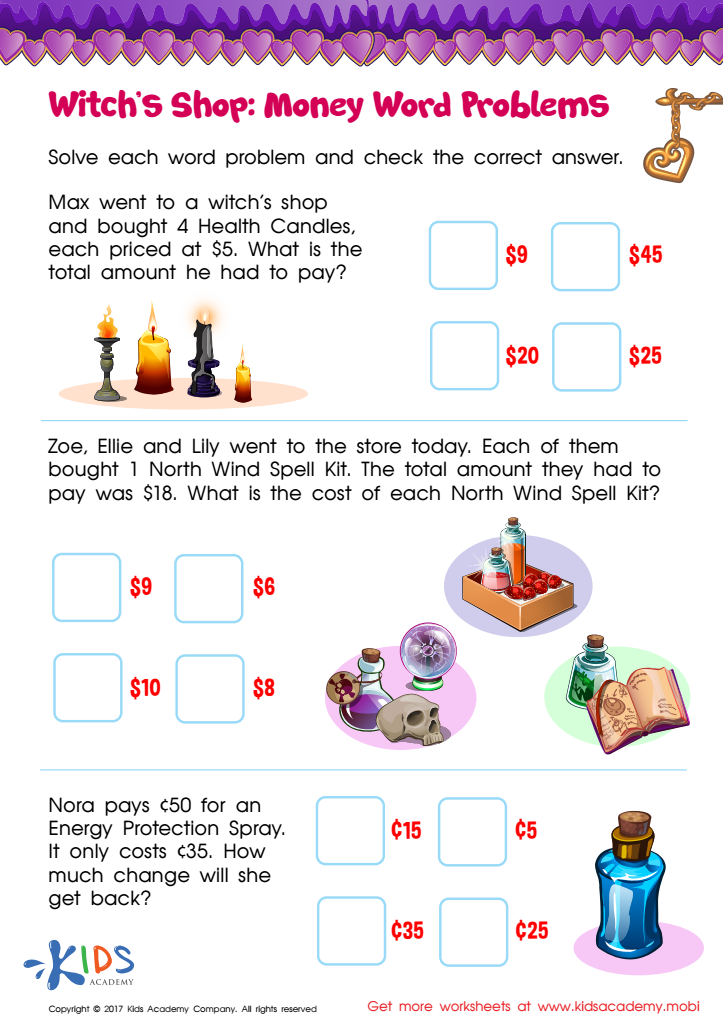

Money Word Problems Printable
The Importance of Normal Worksheets on Money Word Problems for 6-Year-Olds: A Homeschool Perspective
In the journey of homeschooling, interactive worksheets stand out as a fundamental tool for teaching complex concepts in a child-friendly manner. Among these, normal worksheets on money word problems are invaluable, especially for children around the age of six years old. These resources not only introduce basic arithmetic but also integrate everyday life skills that are crucial as children grow. Let’s explore why these homeschool interactive worksheets are so beneficial and how they can make learning about money both fun and educational.
1. Building Foundational Math Skills Normal worksheets on money word problems are designed to help children understand and apply basic math operations such as addition, subtraction, and simple multiplication. At the age of six, children are at a critical stage in their cognitive development, where they can grasp more complex ideas than before. These worksheets provide a structured way for children to practice these skills, ensuring they get the repetition needed to build strong mathematical foundations.
2. Developing Real-World Application One of the most significant advantages of using money word problems is that they teach children how to apply math in real-world scenarios. These problems often involve situations like making change, budgeting a small amount of money, or deciding between different purchase options. Through these homeschool interactive worksheets, children learn that math is not just abstract numbers but a useful tool that helps them make decisions and solve problems in everyday life.
3. Enhancing Problem-Solving Skills Money word problems require children to think critically and logically. They aren't just about finding the right answers; they're also about understanding the process and developing a strategy to solve the problem. This enhances problem-solving skills, which are essential not only in academics but in everyday life. Children learn to approach problems systematically, enhancing their ability to think independently and creatively.
4. Teaching Financial Literacy Early On It’s never too early to start learning about money management, and these worksheets are a perfect introduction. They familiarize young learners with basic financial concepts and vocabulary, such as spending, saving, and the value of different denominations of money. This early education in financial literacy is crucial in setting the foundation for more sophisticated financial decisions later in life.
5. Engaging and Motivating Homeschool interactive worksheets are designed to be engaging. They often include colorful graphics, relatable scenarios, and varied problem types that keep learning interesting. For a six-year-old, this variety and visual appeal are critical in maintaining focus and interest—a crucial element in homeschool environments where parents often juggle multiple roles. These worksheets can also include interactive elements such as puzzles, matching games, and cut-and-paste activities, making learning about money feel more like play than work. This engagement leads to deeper learning and retention of the concepts being taught.
6. Encouraging Independence As children work through money word problems, they gradually build confidence in their abilities to tackle challenges independently. This is especially important in a homeschool setting, where self-directed learning is often a goal. By working through problems on their own, children learn to trust their judgment and abilities, fostering a sense of independence that will benefit them throughout their educational journey and beyond.
7. Facilitating Personalized Education Homeschooling allows for a highly personalized approach to education, and homeschool interactive worksheets on money word problems can be easily adapted to suit the individual learning pace and style of each child. Parents can choose worksheets that align with their child's interests and current understanding, making adjustments as needed. This tailored approach ensures that each child is neither under-challenged nor overwhelmed, optimizing their learning experience and outcomes.
8. Supporting Parental Involvement These worksheets also provide a framework for parents to become actively involved in their child’s mathematical education. By working through the problems together, parents can observe their child's reasoning processes, identify areas where they might be struggling, and provide immediate feedback and support. This active involvement strengthens the parent-child bond and boosts the child's confidence and motivation.
9. Providing Assessment Opportunities Finally, money word problems offer homeschooling parents an effective way to assess their child's understanding and progress in math. By regularly incorporating these worksheets into their curriculum, parents can track improvements over time, identify concepts that need further reinforcement, and adjust their teaching strategies accordingly. This ongoing assessment is crucial for ensuring that children are developing a solid understanding of both math and money management.
In conclusion, normal worksheets on money word problems are a cornerstone resource in homeschooling environments, especially for young learners aged six. They not only build essential math and problem-solving skills but also introduce important financial literacy concepts in an engaging and child-friendly manner. By integrating these homeschool interactive worksheets into their curriculum, parents can provide a comprehensive, enjoyable, and effective early education in mathematics and money management.
 Assign to the classroom
Assign to the classroom




